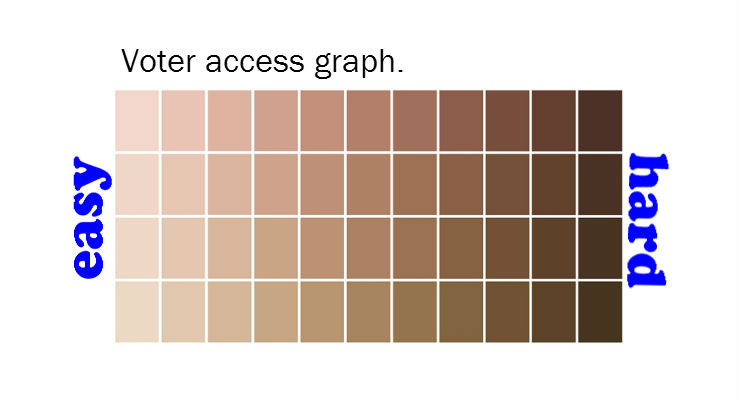
The are various types of barriers facing voters including photo ID requirements, voting booth availability, the flexibility of poll hours, and the availability of time off from work with pay for voting. Many of these barriers impact certain communities more than others. Native American people living on reservations are one of the communities. The following is from Lisa Kaczke, a journalist at the Sioux Falls, South Dakota Argus Leader a publication owned by the USA Today Network:
A voter ID law and manipulated legislative boundaries are among the ways Native Americans’ votes are diluted in the Dakotas, a U.S. House panel was told on Tuesday. Tribal leaders and voting organization representatives described problems faced in North Dakota and South Dakota during a field hearing held by the U.S. House Elections Subcommittee, which is holding seven hearings around the country as it compiles a report for Congress on the 1965 Voting Rights Act.
The subcommittee decided to visit the Dakotas because North Dakota adopted a voter identification law that disproportionately burdens Native Americans and South Dakota “has had more litigation over voting rights violations than any other state in Indian Country,” said U.S. Rep. Marcia Fudge, D-Ohio.
Read the full article here. South Dakota’s native population is diverse as a result of the area’s unique history. According to the South Dakota Department of Tourism:
South Dakota is a “land of the Dakota, Lakota and Nakota. There are nine Native American tribes that call South Dakota home, and each of them has a unique story to tell. Working together, they welcome visitors into their communities in order to educate and to share. When visiting Native communities, you will experience genuine hospitality, discover authentic art, and hear about the fascinating history and unique culture of the people known by many as Sioux”.
More information on the history of the local people can be found in an excellent summary put together by Partnership With Native Americans, a “501 (c)(3) nonprofit organization committed to championing hope for a brighter future for Native Americans living on remote, isolated and impoverished reservations”. According to information on their website:
The Siouan language family, including Lakota-Dakota-Nakota speakers, inhabited over 100 million acres in the upper Mississippi Region in the 16th and early 17th centuries. Conflicts with the Cree and Anishabe Indians, as well as the lure of the Great Plains’ buffalo herds, incited the Sioux to move further west in the mid-17th century.
What do you think about controversy? Leave your comments below.
Leave a Reply